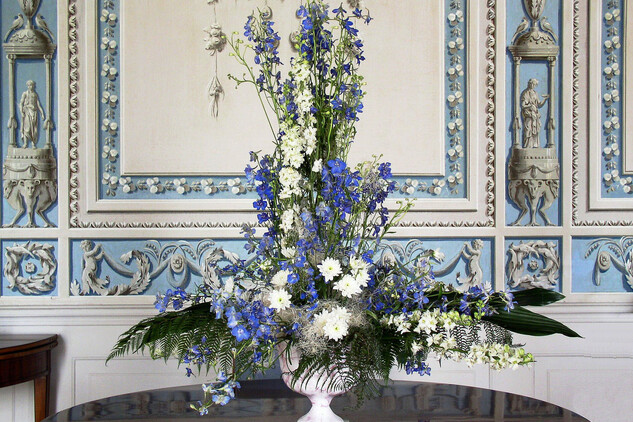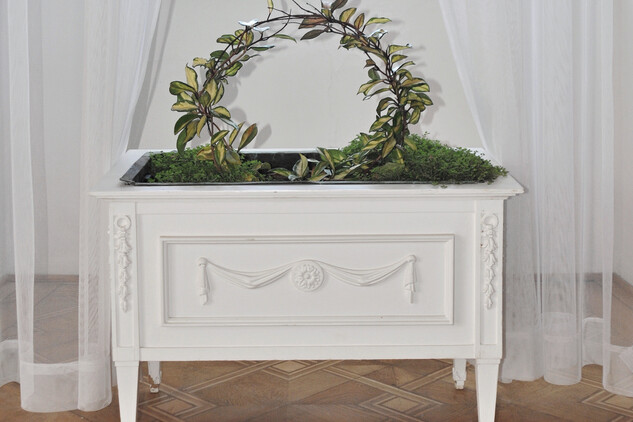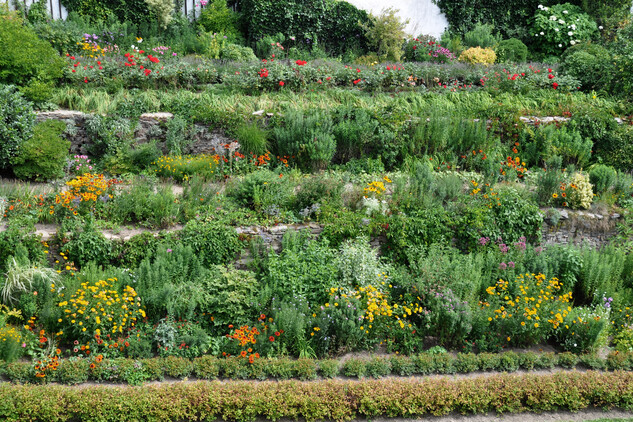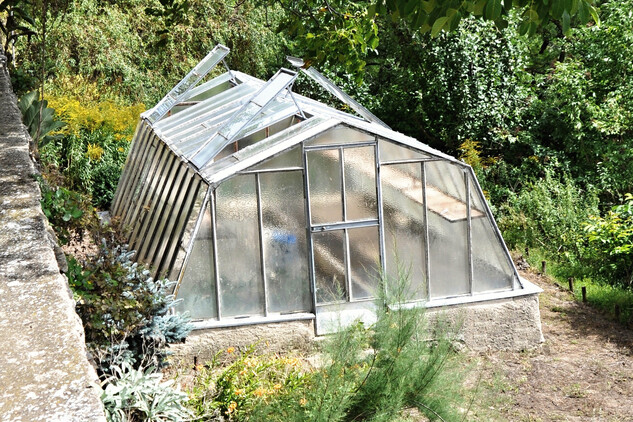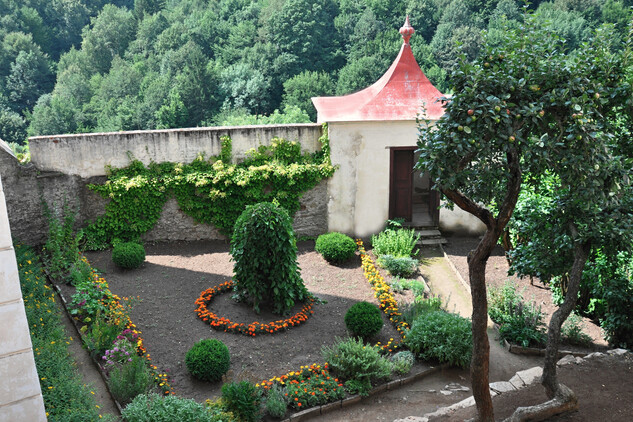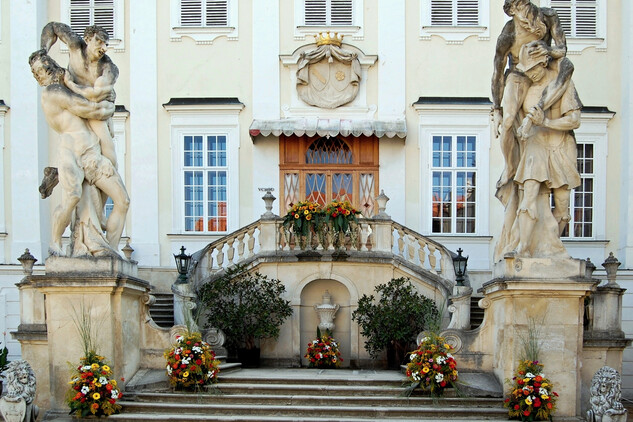NATURAL ENVIRONMENT
Indoor vegetation, greenery in the internal area of the chateau and the chateau garden
INTERIOR PLANTS
Live plants, cut or container-grown, are a traditional part of the historic interior. Vranov was no exception to this, and indoor plants were indeed grown here in the past, which can be documented by several photographs and preserved 19th century furnishings and equipment. Today the rooms of the chateau are decorated with up to eleven flower decorations and bouquets, as well as several dried-flower decorations, which can be admired by passing visitors.
All the flower decorations have to respect the historic and stylistic character of the interior, which applies also to the evergreen plants in wooden containers. These are mostly subtropical species such as laurel, Japanese Euonymus, privet, palms, or Aspidistra and variegated ivies. To introduce more attractive shapes and colours, the chateau caretakers have added a few tropical plants as well.
CHATEAU GARDEN
The original design of the gardens around Vranov castle was limited by lack of space on this small rocky outcrop, as well as by the sloping terrain enclosed within the medieval bulwarks.
- The southern slope, which is not so visible and is inaccessible to the public, was originally used as a kitchen garden with vegetable plots, where fruit trees, grapevines, or asparagus grew, and which nowadays serves as flower garden with shrubs and a range of common annuals and perennials.
- The attention of visitors is naturally drawn by those parts of the garden that are directly visible, and through which they come. Right behind the entrance to the chateau complex, there are solitary trees and shrubs that remained there from the original garden layout - for instance the honeylocust by the bridge. The first moat is a home to one unique plant, the ancient ivy that climbs up to the foot of the northern house. Originally this moat was also used as a vegetable garden - in its southern part, which is now occupied by the stunning walnut tree, the gardener's house used to stand (nowadays only remains of the walls are visible). An old thuja has survived at the far end of the entrance bridge.
- The lawns under the bridge in the inner section of the barbican used to serve as a fruit orchard, but only three old walnuts, a pear, and a prune tree remained. A ginkgo and the Althann Prune were recently planted here, the latter of which was bred some 150 years ago at the Althann dominion of Králíky in Northern Bohemia. Its name commemorates the most important noble family in the history of Vranov. Five hornbeams grow in a regular linear arrangement along the elevated terrace above the path to the chapel.
- Distinct and attractive prominent feature is the ornamental garden below the entrance bridge. It consists of three terraces. The oldest plants, which create the core of its design, are mainly the cherry-laurels, philadelphus shrubs, large flowering quince shrubs, and weigela. These woody plants are accompanied by a wide range of perennials, annuals, and biennials, which provide for colour interest, harmony, and variability throughout the year, flowering during the entire season, and linking the garden to the surrounding landscape. The only formal feature in this garden is the rose bed on the top terrace, which is lined with a low lavender hedge. The space is designed mainly for looking from above, and therefore large spots of bold colour and combination of distinct textures are applied there. For the eyes of patient viewers however, there are also plenty of details to look at, as well as soft colour and tonal harmony.
- In the 1970's, an old horse chestnut on the first courtyard was replaced by a silver linden, which is surrounded by a bed of catnip that grows there as an interesting replacement for a lawn. Below the courtyard, in front of the bulwark house, a bizarrely shaped apple tree can be seen, as well as a weeping mulberry situated in the centre of herbaceous bed, and a shrubby Hypericum.
- On the court of honour, two old yews grow, which are over hundred years old. Only one last tree remained from the original row of shaped acacias along the metal railing, and is accompanied by some palms grown in wooden buckets, which is a design issuing from 19th century pictures. There were originally also two tall poplars growing close to the viewpoint, which created a prominent feature and framed the view to the Vranov valley. The poplars were replaced by the two Oxford cedars, planted in the middle of the lawn one level below, which can also be seen from far away.
- On the southern terrace, just as on the closed northern terrace, special gardens were established around the 1780's. Their original form and design are unknown; only two images capturing their romantic-style layout were preserved. Only the acacia tree remained from the earlier design of the southern terrace, which grows close to the triumphant arch, and a weeping ash as the only solitary tree on the northern terrace.
The greenery of the internal area of the chateau can be seen in the photographic gallery Garden. Information about the Podyjí National Park, which also includes Vranov Chateau, is available on the website www.nppodyjí.cz.
